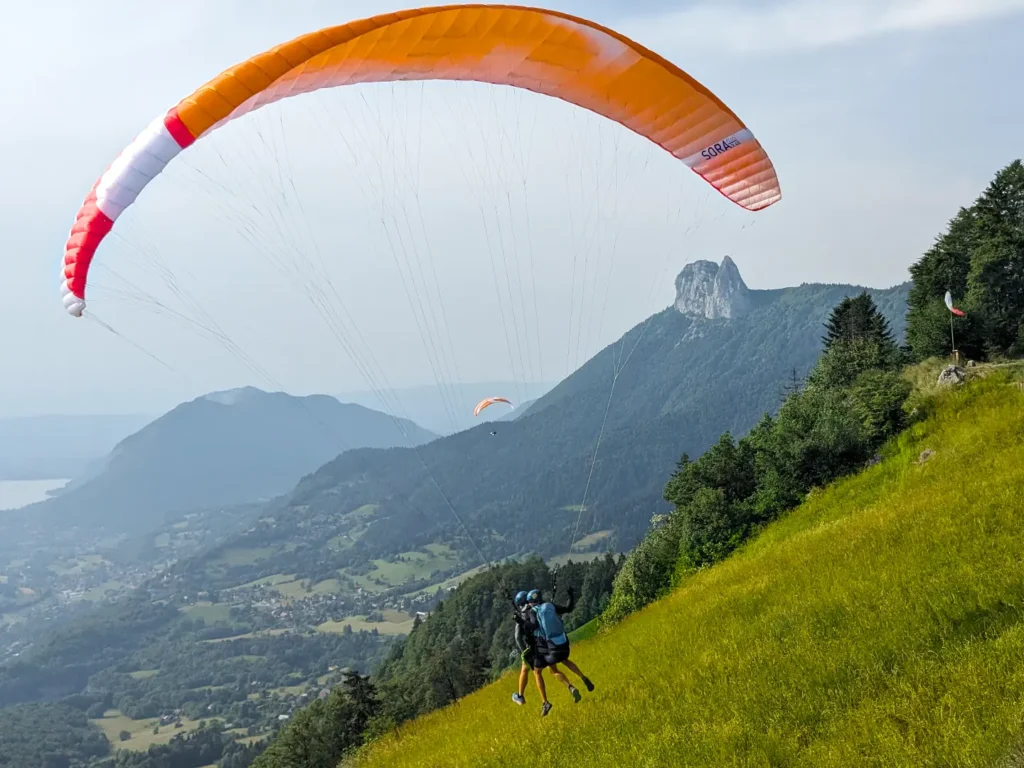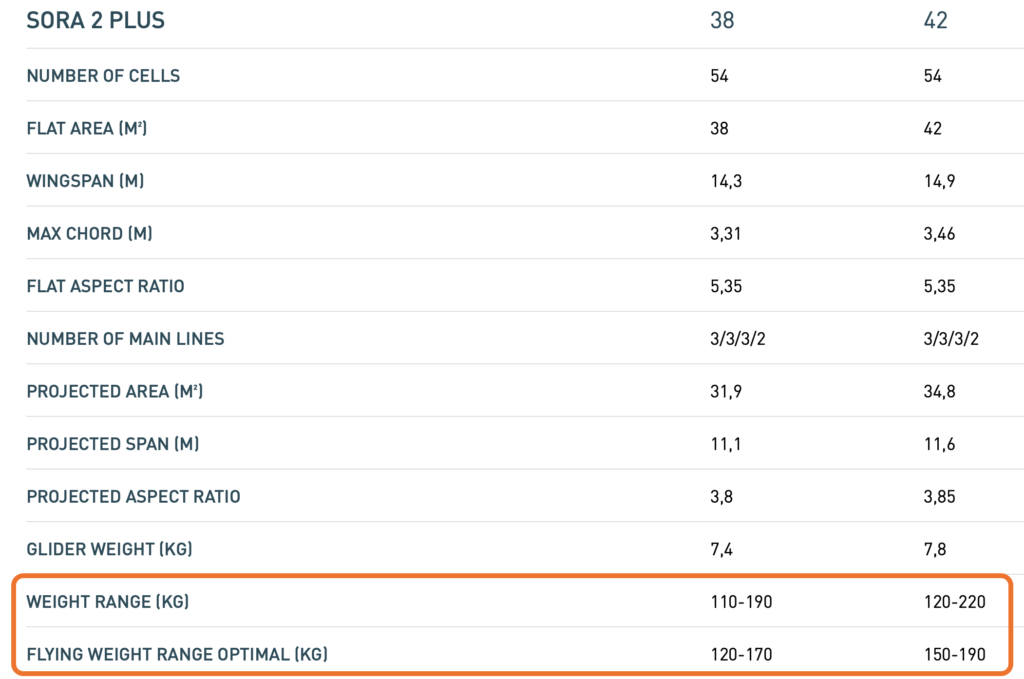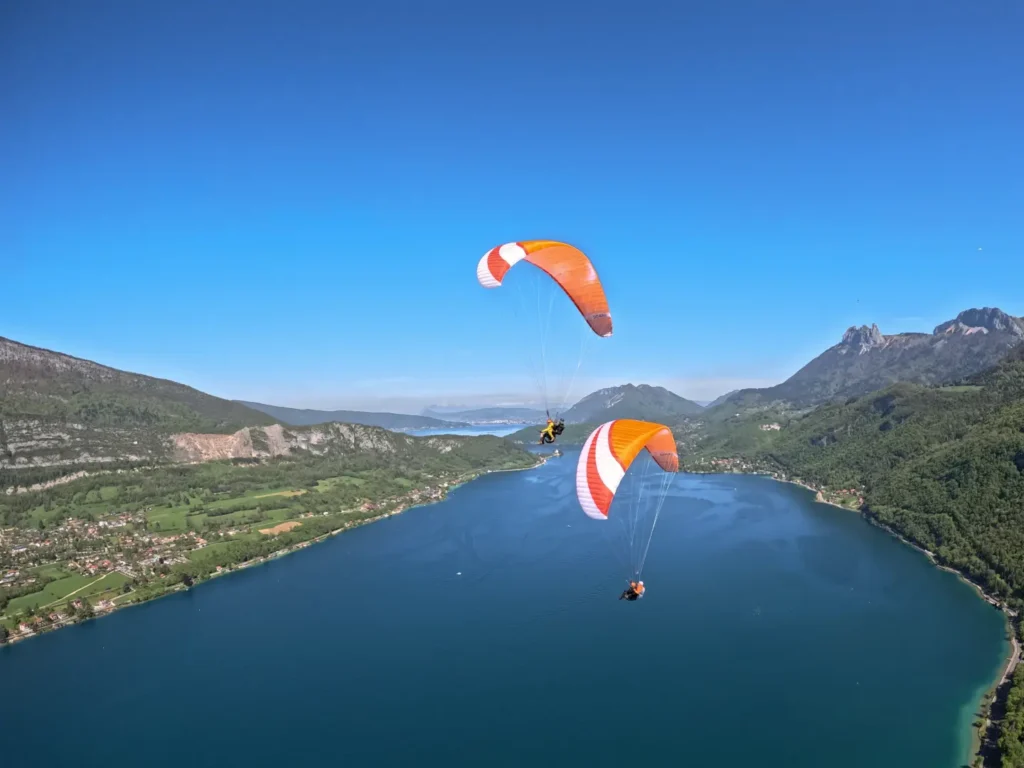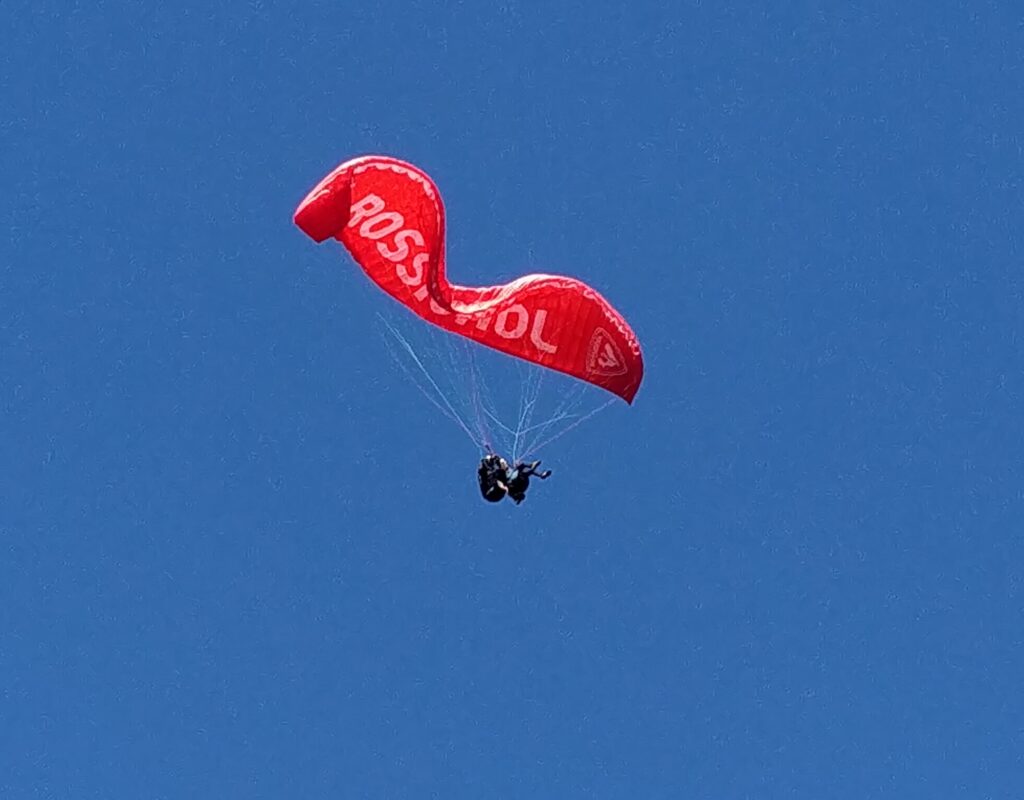
Top 5 tandem paragliding things you didn’t know
Tandem paragliding has a few other reasons to surprise you beyond the amazing experience that is flying like a bird…
As you consider joining the thousands of people that are paragliding for the first time each month, there are a few things you probably didn’t know about tandem paragliding. We tell you all here.
We have selected below the top five facts that may surprise you about tandem paragliding. So when you are in flight, you will already know about them!
- There is no jumping in tandem paragliding
- Your weight is a very important factor
- Tandem paragliding is fifteen times safer than driving a car
- Paragliders can only go down, un-aided
- The horseshoe technique, a fast descent technique, is unique to tandem paragliding
There is no jumping in tandem paragliding

Due to the popularity of parachuting, the jumping off a plane with a parachute, a tandem activity quite popular amongst thrill-seekers, people assume and often refer to the idea of doing a tandem paragliding “jump”. This is a misnomer in the case of tandem paragliding.
When stepping off a plane, there is indeed an action relatable to a “jump” whereby it is necessary to hop off the edge of the plane to clear it. This is not the case in paragliding. Instead, the action is more akin to naturally gliding off the gentle slope at take off. One second, you are taking brisk steps down the slope, the next, when the paragliding wing starts generating lift, you are gliding above it.
This transition is seamless and very natural, there is nothing sudden or extreme about it, which is why we talk about a paragliding flight and not a paragliding jump.
Your weight is a critical factor for flying tandem

It is very likely that you have been asked how much you weight when you booked your tandem paragliding flight. You may have asked why and perhaps received a vague answer?
Your weight is a critical factor: all paragliding wings are designed to carry a specific weight, depending on their size, they are guaranteed to fly safely, as intended, within a specific weight range only. We know how much your pilot weights. We need to make sure that the cumulated wing with your weight and all the material falls into the range.. It is for your safety. Simple!
Tandem paragliding is 15 times safer than driving a car

There is often an assumption that since paragliding is considered an “extreme” sport, it must be dangerous.
But, in fact, when comparing the official national statistics for France, tandem paragliding when done with a professional accredited school, such as Flyeo, is fifteen times safer than driving a car, in France.
In fact we have dedicated a whole article to answering the question is tandem paragliding safe?
The horseshoe technique for fast descent is unique to tandem paragliding

All tandem paragliding pilots master a number of fast descent techniques that allow them to rapidly come to landing should the need arises.
Tandem paragliding wings have a big wingspan, tip to tip: up to 35 meters!
A key benefit is that they can perform a fast descent technique which is unique to them: the horseshoe technique.
Essentially by folding the middle of the wing towards the center of the glider, thereby greatly reducing the surface area, they come down faster while remaining perfectly safe.
In french, this is called “doing the shrimp” or “granny’s crooked smile”…

